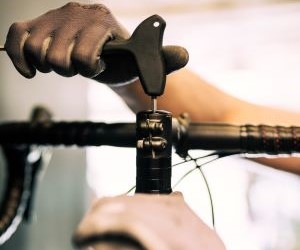Learn how to deal with punctures on long rides with prevention tips, repair techniques, and smart gear choices to keep rolling without stress.
HOW DO I PROTECT SKIN FROM SUN DURING RIDES?
Cycling exposes riders to prolonged sun exposure, often during peak UV hours. Without proper protection, this can lead to painful burns, premature aging, and an increased risk of skin cancer. Sun safety is not just a cosmetic concern—it’s a performance and health necessity. Fortunately, with the right combination of sunscreen, clothing, and habits, cyclists can enjoy long rides while keeping their skin safe. This guide explores practical, science-backed strategies to defend against UV damage on the bike.

Using sunscreen effectively
Sunscreen is the first line of defense for exposed skin during rides. However, not all sunscreens are created equal, and effectiveness depends on how you apply and reapply them. Choosing the right formula ensures lasting protection against both UVA and UVB rays.
SPF and broad-spectrum coverage
Always opt for a broad-spectrum sunscreen with SPF 30 or higher. SPF 30 blocks about 97% of UVB rays, while higher SPF values provide incremental improvements. Broad-spectrum labeling guarantees UVA protection as well, which prevents long-term skin damage like wrinkles and pigmentation.
Application and reapplication
Apply sunscreen 20–30 minutes before heading out to allow it to bind to the skin. Use about one ounce (a shot glass worth) for full-body coverage. Pay special attention to often-missed areas like the back of the neck, ears, and backs of hands. Reapply every two hours, or more often if sweating heavily. Stick and spray versions can be easier to reapply mid-ride.
Choose SPF 30+ broad-spectrum sunscreen.
Apply 20–30 minutes before your ride.
Cover often-missed areas like ears and neck.
Reapply every two hours or after heavy sweating.
Sunscreen is only effective if applied generously and reapplied consistently. Treat it as part of your gear checklist, just like your helmet or hydration.
Protective clothing and gear
While sunscreen works well for exposed areas, clothing offers reliable and consistent protection. Advances in cycling apparel now provide sun-blocking fabrics that combine breathability with UV resistance, reducing the need to reapply sunscreen constantly.
UV-protective fabrics
Look for jerseys, arm sleeves, and leg covers labeled with UPF ratings (Ultraviolet Protection Factor). UPF 50+ fabrics block over 98% of UV rays while remaining lightweight and breathable. These garments often outperform sunscreen in durability and coverage, especially for long rides.
Accessories for added protection
Cycling caps under helmets shield the scalp and forehead. Sunglasses with UV protection prevent eye damage and reduce squinting, which causes facial wrinkles. Fingerless gloves with UPF fabric protect the tops of hands, an area often forgotten but highly exposed during rides.
Wear UPF-rated jerseys, sleeves, and leg covers.
Use cycling caps and UV-protective sunglasses.
Choose gloves with sun-blocking fabric.
Combine clothing with sunscreen for full coverage.
Protective clothing not only shields skin but also improves comfort by wicking sweat and keeping body temperature regulated. It’s a double win for performance and safety.
Timing and riding habits
Beyond sunscreen and clothing, your riding schedule and habits significantly affect sun exposure. Smart planning can drastically reduce risk while keeping rides enjoyable.
Avoiding peak UV hours
UV radiation is strongest between 10 a.m. and 4 p.m. Whenever possible, schedule long rides for early morning or late afternoon when the sun is lower. Not only is this safer for your skin, but cooler temperatures also improve endurance and comfort.
Route and shade choices
Choosing routes with tree cover or sections of shade provides intermittent relief from direct sun. Urban routes may offer shade from buildings, while rural or forested paths give natural protection. Even short breaks under shade during hydration stops help reduce cumulative UV exposure.
Ride in early morning or late afternoon.
Avoid long rides during 10 a.m.–4 p.m. if possible.
Select shaded routes for natural UV breaks.
Take hydration stops in shaded areas.
Sun protection is not just about products or clothing—it’s also about habits. Planning your rides with UV exposure in mind ensures both safety and improved performance in hot, sunny conditions.
YOU MAY ALSO BE INTERESTED






